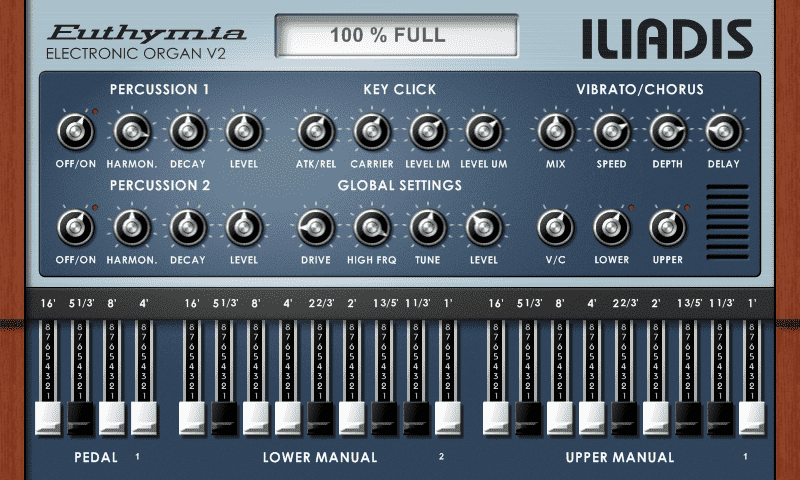Native Instruments B4 Ii Keygen
Adventure In Odyssey Podcast. The main 'Manual' view in B4 II. Since its launch in 2000, NI's B4 has been the software instrument of choice for those who want realistic tonewheel organ sounds from their computer. But NI are clearly convinced it can be better. Since 1980, when Korg released their original CX3, and made what was arguably the first serious attempt to replicate the sound of a Hammond organ in a portable keyboard, there have been scores of ersatz tonewheel organs, some good and others, well, not so good. With the advent of software instruments, 'virtual' tonewheel emulators began to appear, and it was NI's B4, first reviewed in SOS back in November 2000, that went on to become something of an industry standard. B4 hasn't been without its competitors — Emagic (now Apple) soon followed up with EVB3 (see SOS February 2003), and since then, we've seen the likes of USB's Charlie, a sample-based VST instrument (reviewed in SOS September 2004). Despite these, though, NI's B4 has remained the benchmark for Hammond plug-ins, gaining favour not only with studio-based musicians but with live performers, too.


There is, however, always room for improvement. Whereas Emagic/Apple's EVB3 offers four different 'Leslie' cabinets and a choice of single or dual rotary speakers, B4 has no choice of cabinet simulations and no ambience simulations, and one frequently voiced complaint is that the volume level rather frustratingly tails off from around middle 'C' downwards. What's more, B4 's functionality has not been updated since its first release, five years ago! However, rather than making changes to B4, NI have opted to create a new generation of the plug-in. Significant enhancements and additions abound in this version — a choice of cabinet emulations, dual rotary speakers, and a new modelled tube amp are just a few of the goodies on offer. So does it sound even more authentic than before?
B4 II will run as a stand-alone instrument or as a VST, Audio Units, RTAS or DXi plug-in. Minimum system requirements are Windows XP with a 700MHz Pentium or 1.3GHz Athlon XP processor and 256MB of RAM, or a 733MHz Mac G4 with OS 10.3 and 256MB of RAM. Once installed, you have 30 days of full functionality before the software has to be registered to continue working. You do this using NI's Registration Tool method; this generates a System ID based on your computer's hardware, which you email to Native Instruments. They in turn email an Authorisation Key back to you, which, when entered into the Registration Tool, activates B4 II permanently.
Nov 22, 2005 I'm a longtime B4 owner who just received my B4 II update today. To install it, it requests a serial number just like all NI products. Nubiles 14 12 08 Uma Jolie on this page.
In the event that you have no Internet connection available at all, registration can also be done by snail mail — but not, apparently, by telephone. In contrast to B4 's two screens, or views, B4 II presents five different views. Constantly visible at the top of all five views is a panel from which you can select Presets, store sounds and select any of the five views. The main view, 'Manual' (shown above) displays the entire instrument with both manuals, pedalboard, three groups of drawbars and the performance controls from a real Hammond. 'Organ' view gives better access to the drawbars than Manual view, and provides quick access to the modelled 'Tube Amplifier' and speaker cabinet options.Changes which are immediately obvious are the addition of a Rotator Brake/Run toggle switch below the keyboard ( B4 's Rotator and Drive on/off switches are gone) and a control box housing Reverb level and Drive (tube distortion) amount knobs. The Rotator Brake/Run switch allows the Rotator to be stopped whilst still allowing the sound to be coloured by the Rotator's crossover network.
The Rotator can still be bypassed entirely, but via a different editing view, as will be seen shortly (see page 76). The controls for Percussion and Chorus/Vibrato are present as before. The upper and lower manuals and pedalboard are accessible via their own MIDI channels as on the previous version, and keyboard splits can be set up, providing 'zoning' of the sounds of both manuals and the pedalboard from one MIDI channel if desired. Keysplits can be assigned directly from the Manual view by holding down the right mouse button (the Control key on a Mac) and clicking on an upper manual key, and then making your choice from the resultant drop-down menu. Installation And Configuration Of Microsoft Exchange Server more. The manuals and pedalboard can also be independently transposed by ±1 octave by a similar click-and-right-mouse-button (or Control button on the Mac) manoeuvre. Keysplits and transposition settings are global to B4 II — in other words, they're not storable on a per-preset basis.
The Organ view (above) is where many of B4 II 's new features are to be found, and is divided into four sections. The lower section duplicates the drawbars and performance controls of the Manual view, but displays them larger, for which my aging eyes are truly thankful. The upper section is split into three panels: Organ/Pedal bass, Tube Amplifier and Cabinets/Microphones. The Organ section provides control over Key Click amount, fully variable response to keyboard velocity and Leakage amount. Leakage is a characteristic of older Hammonds, where the crosstalk 'whine' between the tonewheel outputs can be heard, varying in timbre according to which drawbars are in use, and which notes are playing. When applied carefully, this can add a great deal of realism.